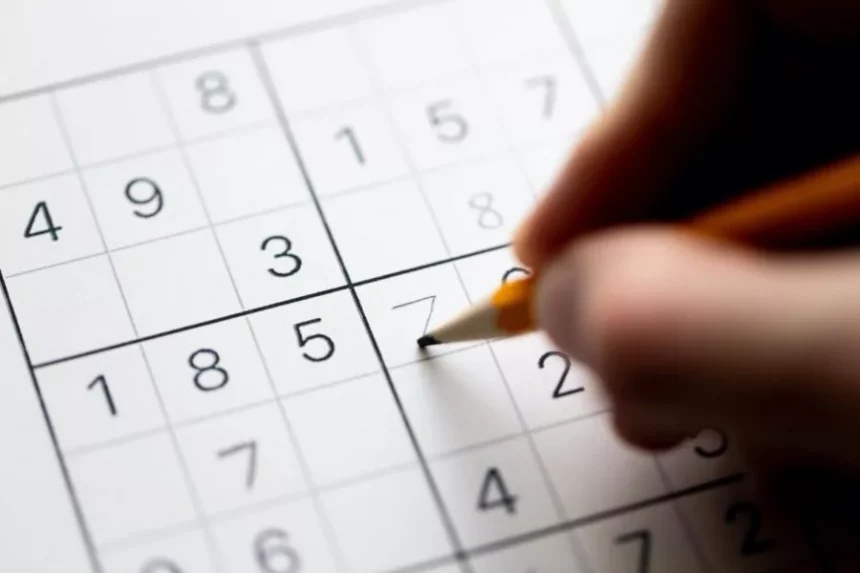Sudoku is a captivating and challenging puzzle game enjoyed by people of all ages and skill levels. It is simple enough for beginners to pick up the basics, yet complex enough to provide a real challenge for experienced players. If you’re looking for tips and tricks to help you crack those tricky Sudoku puzzles, look no further. We’ve compiled a comprehensive list of strategies to equip you with the skills and confidence you need to take your Sudoku game to the next level. Whether you’re a beginner looking to learn the ropes, or an expert looking to refine your tactics, our tips and tricks will have you solving Sudoku puzzles like a pro. So grab a pencil and paper, and let’s get started!
Basics of Sudoku
Sudoku puzzles are made up of 81 cells that are divided into 9 square grids. In each puzzle, 9 digits (1-9) are hidden somewhere in the grid. The challenge is to find the digits in the grid by filling in each cell with one of the 9 digits. Each row and column of the grid will have a single digit. Each square in the grid will have one of the digits as well. The only cells with two or more numbers are the corner cells – the cells in the corners of each grid square. The puzzle is solved when all the cells are filled in with numbers. Once the puzzle is solved, you can’t go back and change any of the numbers.
Tips for Beginners
These simple tips will help you improve your game and get you started on the right foot.
- Before you start writing numbers in the cells, note the pattern of numbers in the puzzle grid. Even if you’re not solving the puzzle in pencil, this will help you get a feel for the puzzle.
- Many Sudoku puzzles follow a certain pattern. Make note of any repeating digits or patterns in the puzzle and try to fill in the blanks accordingly.
- You don’t have to start with the first grid. You can jump around and start in any grid you like.
- If you are struggling with a certain grid, consider skipping it and going back to it at a later time.
- Avoid using common strategies that can be found in puzzle-solving guides. It’s more satisfying to solve a puzzle without consulting outside sources.
Strategies for Intermediate Players
As you become more comfortable with solving puzzles, you will be able to pick up on more advanced strategies.
- Look for patterns and sequences in the grid. This will help you avoid getting stuck on a single cell.
- As you progress through the puzzle, mark cells that you think might contain a specific digit. If a pattern emerges, you will know which cells to mark.
- Be careful not to mark too many cells at once, or you may get overwhelmed. Mark only two or three cells at a time and focus on those before marking more.
- Use the strategies that you discovered while solving beginner puzzles. Revisiting these basics will help you strengthen your game and pick up on more advanced techniques.
Advanced Techniques
The more puzzles you solve, the more advanced techniques you’ll pick up. Once you’ve become a Sudoku master, you can try some of these strategies to tackle the most difficult puzzles.
- Look for easy-to-solve squares: Squares that have a single digit and no repeated digits. Once you solve these squares, you can use them as a springboard to solving other squares.
- Look for squares that are missing a digit. These squares are easy to fill in once you find the correct digit.
- Look for squares that are missing two digits. These squares will be based on your previous guesses, so once you solve one square, you can use that information to solve other squares.
- Use the pencil marking method to solve puzzles. This method will equip you with all the advanced tools you need to solve any puzzle.
Analyzing the Puzzle
Now that you understand the basics of Sudoku, it’s time to assess the puzzle in front of you and pick up on any patterns or numbers that stand out. As you look through the puzzle, ask yourself the following questions:
- Do the digits follow a sequence?
- Do any of the digits repeat themselves?
- Are any digits missing?
- What are the corners of the puzzle?
How to Use the Pencil-marking Method
The pencil-marking method is a tried and true strategy used by Sudoku enthusiasts around the world. The method is simple and can be applied to any level of Sudoku puzzle. The steps are as follows:
- Find an easy-to-solve square: You can use a previously solved square, or choose a square that only has one digit and no repeated digits.
- Solve the square: Once you’ve found an easy-to-solve square, solve it. If the square is already solved, move on to the next step.
- Use the solved square as a springboard to solve the surrounding squares: Once you’ve solved one square, use the solved numbers as a springboard to solve the surrounding squares.
Solving Tricky Puzzles
Once you’ve used these strategies to solve simple puzzles, you will be well-equipped to tackle more challenging puzzles.
- Look for squares that are missing two digits. These squares are easy to fill in once you find the correct digits.
- Use the pencil-marking method. This will allow you to pick up on squares that are missing two digits, as well as squares that have a single digit and no repeated digits.
- Use the strategies that you discovered while solving beginner puzzles. Revisiting these basics will help you strengthen your game and pick up on more advanced techniques.
Conclusion
Sudoku is a fun puzzle game enjoyed by people of all ages and skill levels. No matter what your skill level is, there are a number of strategies you can use to improve your game and get better results.








